Corn, soybean and wheat export inspections all slip week-over-week.

The latest weekly export inspection report from USDA, out Monday morning, shows some mediocre data for the week ending May 16, with corn, soybeans and wheat all trending lower from the prior week.
Farm Futures senior grain market analyst Bryce Knorr continues to closely monitor the situation – particularly with China, which is still sitting on massive amounts of outstanding soybean sales.
“Chinese buyers loaded out three more soybean cargoes out of the Gulf in the past week, totaling 7.6 million bushels, but still have around 255 million bushels of outstanding sales,” he notes. “The total for the week remains well behind the rate forecast by USDA for the 2018 marketing year, and what happens to that unshipped book will be decisive in whether or not the government’s estimate is met.”
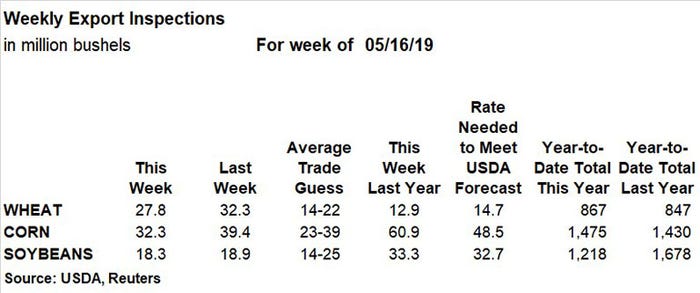
Other buyers likely would be willing to take those bushels because prices out of Brazil are trading at a 6% premium to new originations out of the Gulf, Knorr says.
Soybeans saw total export inspections reach 18.3 million bushels last week, which slid slightly below the prior week’s tally of 18.9 million bushels while staying in the middle of analyst expectations that ranged between 14 million and 25 million bushels. The weekly rate needed to match USDA forecasts moved up to 32.7 million bushels. Totals for the 2018/19 marketing year reached 1.218 billion bushels, trending 27% lower year-over-year.
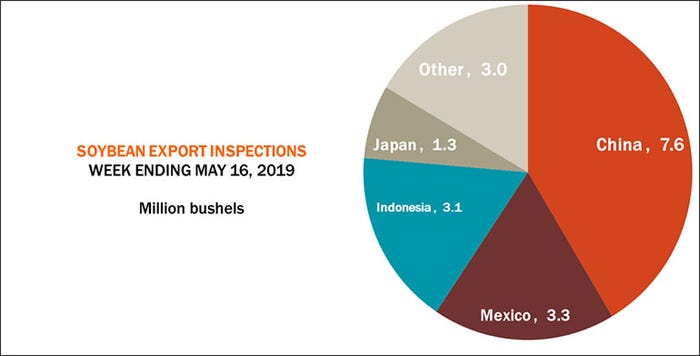
China’s 7.6 million bushels led all destinations for U.S. soybean export inspections last week. Other top destinations included Mexico (3.3 million), Indonesia (3.1 million) and Japan (1.3 million).
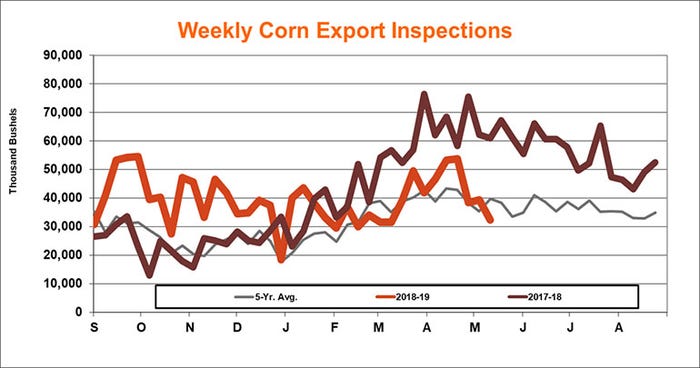
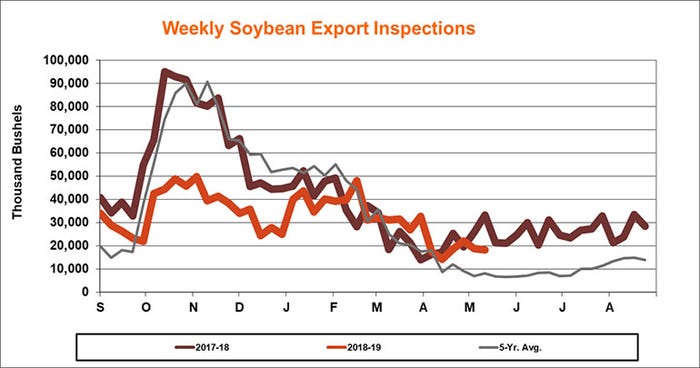
Corn export inspections also eased week-over-week, falling to 32.3 million bushels for the week ending May 16. That stayed in the range of trade estimates of 23 million and 39 million bushels, however. The weekly rate needed to match USDA forecasts continues to climb, now at 48.5 million bushels. Cumulative totals for 2018/19 are still 3.1% above the prior marketing year, reaching 1.475 billion bushels.
“Corn movement also must get going to reach USDA’s forecast,” Knorr says. “Inspections may begin to pick up now that the river system is reopening to traffic, but a brisk pace will be needed throughout the summer.”
Japan was the No. 1 destination for U.S. corn export inspections last week, with 9.8 million bushels. Other top destinations included Mexico (9.4 million), Colombia (4.5 million), Taiwan (3.5 million) and South Korea (2.9 million).

Wheat export inspections reached 27.8 million bushels last week, which was down from the prior week’s tally of 32.3 million bushels but ahead of the average trade guess, which ranged between 14 million and 22 million bushels. The weekly rate needed to match USDA forecasts eased to 13.7 million bushels, with 2018/19 cumulative totals now at 867 million bushels.

“Wheat inspections continue to be good as the marketing year winds down,” Knorr says. “Some buyers may be getting nervous about potential for a late harvest, and perhaps questions about quality due to excessive rains this spring.”
Indonesia was the top destination for U.S. wheat export inspections last week, with 4.8 million bushels. Other top destinations included the Philippines (4.3 million), Nigeria (3.7 million), Japan (3.2 million), Egypt (2.3 million), Mexico (2.2 million) and Kenya (1.9 million).
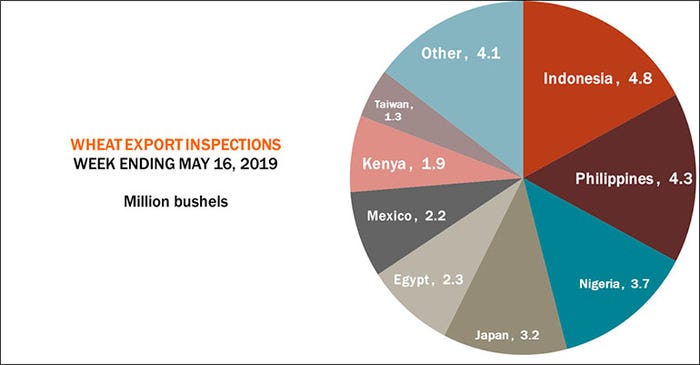
About the Author(s)
You May Also Like




.png?width=300&auto=webp&quality=80&disable=upscale)
